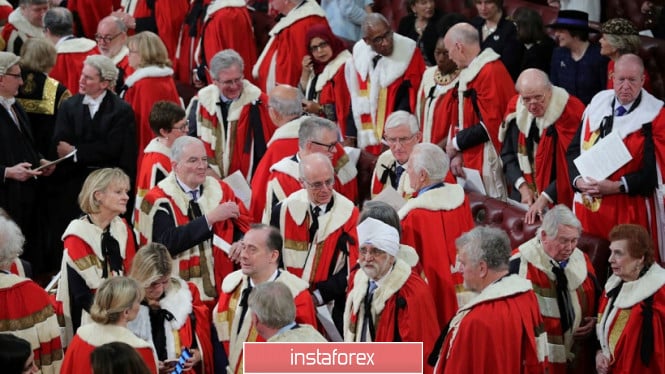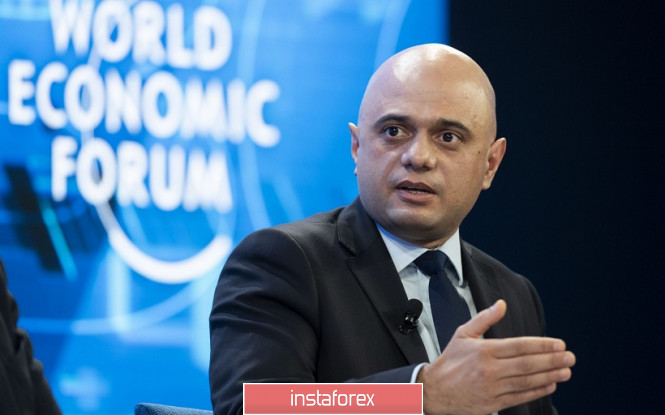The pound is once again "on the horse" after the release of data on the growth of the British labor market. The GBP/USD pair has risen to the middle of the 30th figure, and yesterday's events pushed it further to increase by another hundred points. However, despite the two-day impulse growth, the position of the Briton remains shaky, due to a rather contradictory fundamental picture.
Brexit has traditionally been the main driver of pound's growth. Just a week before the border deadline, the House of Lords still approved the law on Britain's exit from the European Union. The agreement did not go as smoothly as the Boris Johnson government would have liked, since initially, the Lords did not approve of the bill. They made several changes to it and sent it back to the Lower House of the British Parliament. This fact made traders of the currency market excited. In theory, the House of Lords and the House of Commons could endlessly play the so-called "legislative ping-pong", as the Upper House has the right to make its own amendments, and the Lower House has the right to reject or approve them.

In this case, the Lords spoke out against granting the ministers of the British government the right to decide which EU court orders can not be implemented after the country leaves the European Union. They also made four more amendments to the Brexit bill, which the House of Commons is expected to reject. Traders were concerned about the "ping-pong regime", as there was not enough time for such bickering. The "x-hour" was getting closer, and the position of the Upper House of Parliament had a special role for the pound.
That is why, when members of the House of Lords finally approved the bill, the British currency "shot" up, breaking the boundaries of the 31st figure. Now, the fateful document must be signed by Queen Elizabeth II. Afterwards, on January 29, the European Parliament must ratify this agreement.
The pound did not only rose in the market because of the breakthrough in the Brexit issue. The British Finance Minister Sajid Javid also contributed to the currency's growth. Following his "boss", Boris Johnson, Sajid repeated the thesis that a trade agreement with Brussels can be concluded before the end of this year, or before the end of the transition period. Participating in a panel discussion in Davos (together with the American Finance Minister and the head of the IMF), he assured those present that the parties will be able to agree on a deal on both trade in goods and trade in services. Although this optimism was not supported by any specific arguments, the self-confident optimism of the British minister supported the growth of the GBP/USD pair.
It is noteworthy that the strengthening of the British currency was also due to secondary macroeconomic statistics. Traders of the pair usually react poorly to the results of industrial trends in Britain conducted by the Confederation of British Industrialists. This time, however, it was different. First, the index jumped to almost 6-year highs, with the business optimism index rising to +23 points in December, compared to its -44 points in the previous month. The last time that this level of optimism was observed was in April 2014, and such record of growth pleasantly surprised buyers of the GBP/USD pair. Second, the growth of this indicator once again led to talks about the Bank of England taking a wait-and-see position on January 30, even though earlier, traders were almost 80% sure that the regulator will reduce the interest rate at the January meeting.
After a series of negative releases, quite good data on the growth of the labor market were published on Monday. Britain's unemployment rate remained at a record low of 3.8%, and the level of wages (including bonuses) remained at around 3.2% in annual terms, contadicting experts' prediction of a 3% decline. As for the number of applications for unemployment benefits, its figure has increased to 14 thousand. This result is in fact, negative, but according to the forecasts of many experts, it should have exceeded the long-term highs in December. Some estimates said that it could've jumped to 40 thousand to 55 thousand, but what actually happened was that this indicator came out at the level of the previous month, placing it in the "green zone", despite the de facto negative dynamics.

The growth of the British currency is explained by two key points. First, the Brexit, where the verdict of the House of Lords gave "green light" to the implementation of a soft Brexit scenario, since all other procedural points are now formal. Second, market participants once again doubted that members of the British regulator will reduce the interest rate next Thursday.
The above factors allowed the GBP/USD pair to rise to the middle of the 31st figure, however, further growth is again in question. This is because members of the British regulator can also focus on the negative aspects of the British economy, since the UK GDP figure is declining, inflation is growing at the slowest pace since 2016, and retail sales have fallen into negative territory, despite the pre-holiday December period. All these factors will certainly be discussed by the members of the English regulator. As for Brexit, there are stil twists and turns on the transition period ahead. Most experts, as well as representatives of the European Commission, unanimously assure that the parties will not have enough of an 11-month period to approve the deal. Therefore, the "Brexit factor" will haunt the British currency for a long time.
To sum it all up, traders of the GBP/USD pair are showing somewhat premature optimism. In the wake of rumors about the Bank of England's wait-and-see position, the pair may grow to the nearest resistance level of 1.3210 in the medium term (the upper border of the Kumo cloud coincides with the upper line of the Bollinger Bands indicator on the daily chart). Further growth is a big question though as after all, if the members of the English regulator disappoint with their rhetoric and actions, the pair will return to the area of 28-29 figures in a flash. These risks will keep investors bullish until at least January 30.
The material has been provided by InstaForex Company - www.instaforex.com